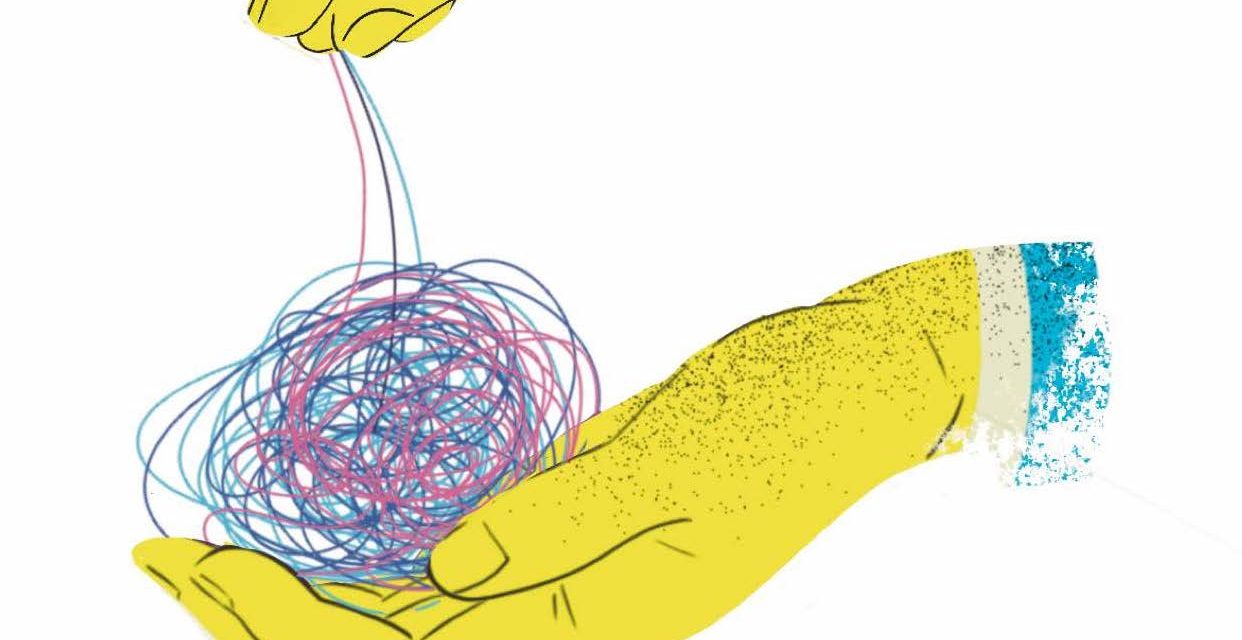
Teaching, Reimagined

DAVID BALL ’88, WHO RECENTLY STEPPED DOWN AS MILTON’S UPPER SCHOOL PRINCIPAL, DISCOVERS A NEW APPROACH TO THE ART OF TEACHING
By any conventional measure, the essay was a mess. An overflowing introduction nearly submerged the essay, leaving the paper’s body gasping for air; sentences, some with indiscernible beginnings or endings, clanged against one another; the citation was, well, innovative, a truly distinctive amalgam of errors. Yet the essay sang. Bold and original, the author presented an argument that, more than he knew, challenged the underlying assumptions of the course, blending his experience, his insight, and his aspirations. At once angry and hopeful, the essay was a beautiful, compelling, memorable mess.
Is my enduring affection for this essay misplaced? A sign of some sort of softening? I certainly do not mean to diminish precision. Indeed, every time I set my fearful foot on an airplane, I expect meticulous adherence to procedure from the pilots; they can take their flights of fancy another day. We tolerate the sloppy and slipshod at our own peril: Words matter, evidence matters, reason matters. And yet that essay burst with a bracing, invigorating humanity. That must have value. Isn’t that the ultimate value?
Now more than ever, and in myriad ways, we find ourselves asking what is indispensable in education. And at a time when matters of pedagogy and curriculum have turned divisive, schools, those shared spaces where together we celebrate youthful potential and honor human possibility, must stand securely on a few firm foundational principles, principles resting on our shared humanity. Two seemingly disparate sources have shaped my recent thinking.
A few years back, I was introduced to circle protocols, a core element of restorative practices. Unfamiliar with the process, I initially approached training in these protocols with a healthy dose of skepticism. Any resistance soon melted away. I learned that the first animating assumption of circle practices, as Carolyn Boyes-Watson and Kay Pranis explain, is simple: “Everyone has a self that is good, wise, powerful, and always there.” I will leave it to the more spiritually facile to wrestle with the metaphysics here; I just know how transformative this premise can be. Imagine an educational landscape in which every teacher were to begin each class, as I now do, with that as their internal mantra, a reminder that our task is to see that good and wise self in every student—the sullen and silent, the bright and bubbly, the cautious and caustic. They are adolescents.
At about the same time, a colleague introduced me to Jal Mehta’s and Sarah Fine’s In Search of Deeper Learning, an elegant and deeply researched study of American high schools. Regardless of a school’s dominant pedagogy, Mehta and Fine conclude, the most effective teachers take a certain stance toward their students. These teachers see students as “creative, curious, and capable”; they recognize students as “creators of knowledge”; they embrace an ethos of “rigor and joy.” These teachers start from certain premises: that their students are eager to discover, to create, and to meet challenges. In effect, Mehta and Fine are calling on all educators to revise that earlier mantra. All students have a wise and good self, yes, and they also hold within them curiosity and creativity just waiting to be unleashed.
Mehta and Fine are suggesting something more, too. Researchers rather than soothsayers, they might reject the old saw about self-fulfilling prophecies. Still, their analysis confirms what we might intuitively expect: Our vision of who students can be shapes the reality of who they become. Starting points matter. Foundational principles matter.
Not even robust principles, of course, can resolve every pedagogical or curricular dilemma. Yet those principles remind us what it means to honor students. When we ask students to wrestle with hard historical truths, when we call on them to confront uncomfortable realities, when we urge them to create a better world, when we acknowledge their distinctive experiences and multiple identities—when we do those things, we convey our confidence in their singular gifts, their remarkable potential, and their full humanity. If we do all that, how can schools not be places of great depth and great joy?
And about that essay: I can’t stop loving it. I will reframe the course in light of the student’s critique, and when I do, I will do my utmost to devise assignments that give every student the opportunity to think with such freedom and write with such verve. They deserve it. I also can’t wait to help the author wrangle his unruly sentences—commas, footnotes, and periods all running wild—so that the power of his writing matches the power of his thought. He is good, wise, curious, creative, and capable. I will honor him with one final challenge.
As a member of Milton Academy’s History & Social Sciences Department, Ball will continue to teach and, beginning this fall, will also coordinate Milton’s re-accreditation process for the New England Association of Schools and Colleges.




